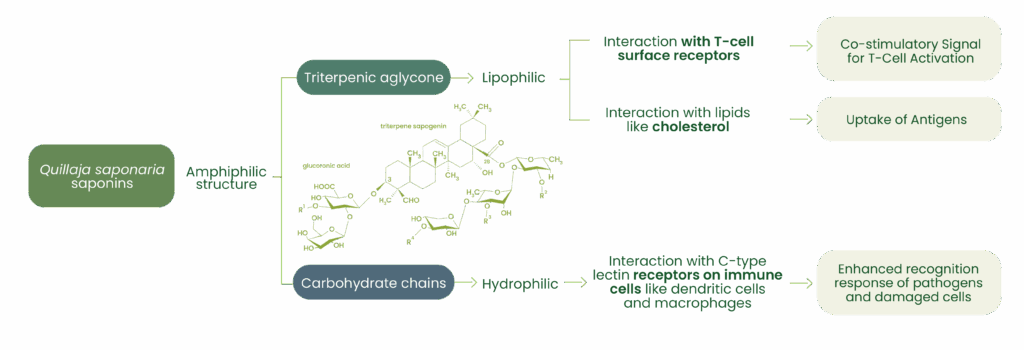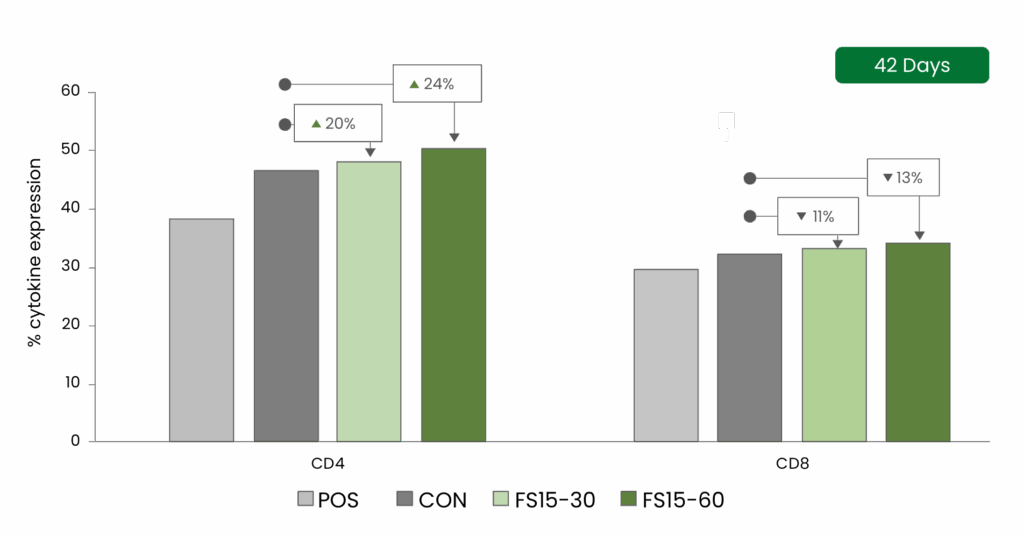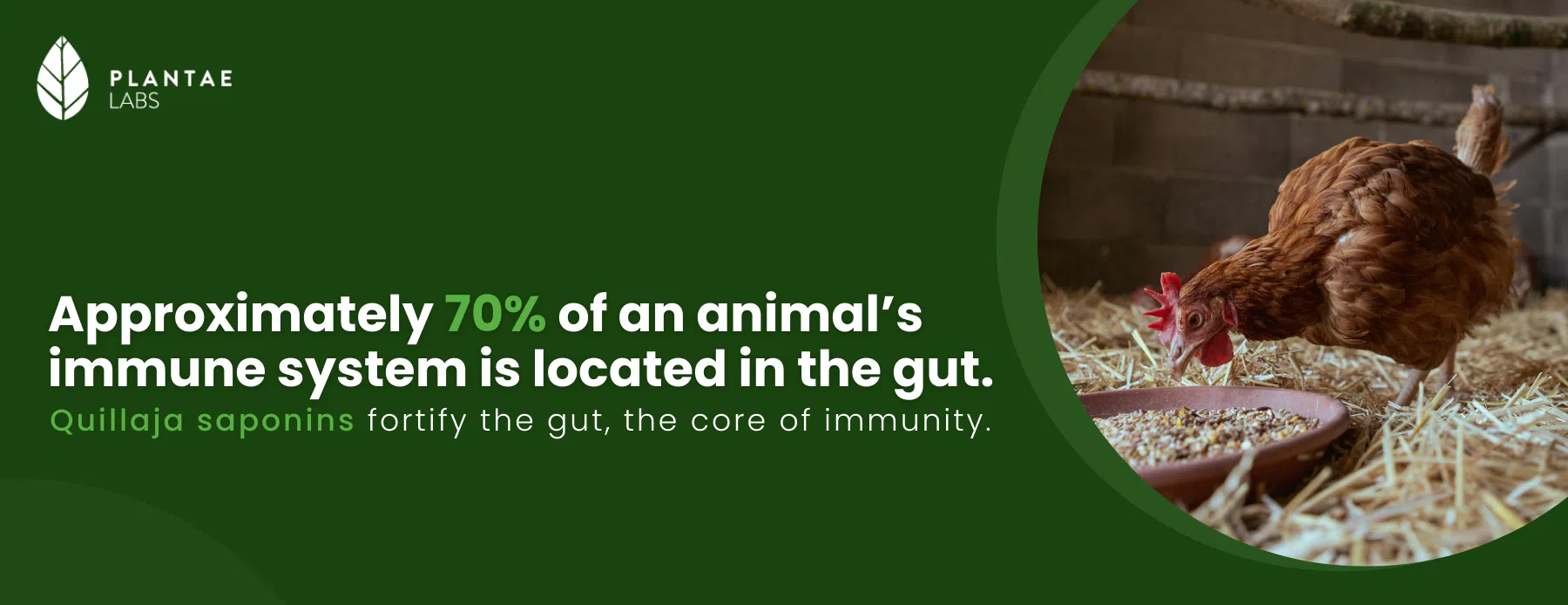Why Immunity Matters in Modern Livestock Production
Healthy livestock are the foundation of profitable production. Every disease outbreak, whether a digestive disorder in piglets, respiratory disease in calves, or parasitic infection in poultry, disrupts weight gain, increases feed costs, and can compromise animal welfare. While treatment is sometimes unavoidable, preventing disease in the first place delivers the greatest return on investment.
In intensive systems, animals face a constant immune challenge. Stressors such as high stocking densities, feed changes, temperature fluctuations, and vaccination schedules can temporarily weaken immune defenses. This is when opportunistic pathogens take advantage, leading to production losses.
The challenge is clear: how to keep the immune system in peak condition without relying solely on antibiotics.
The Growing Challenge of Antibiotic Resistance
Modern livestock production accounts for roughly 73% of all antibiotics used worldwide, making the sector a focal point for resistance concerns. As regulations tighten and consumer expectations evolve, producers are being pushed toward preventative health strategies that don’t rely heavily on therapeutic antibiotics.
Antibiotic resistance is not just a policy or public health issue; it’s a production reality. Resistant bacterial strains can spread within farms, reducing treatment options and increasing costs. Preventing these infections before they require treatment is both a biosecurity measure and an economic necessity.
Quillaja Saponins: Unique Immune Modulators
Derived from the bark of Quillaja saponaria, triterpenic saponins are natural compounds with an unusual amphiphilic structure, meaning they have both water-loving and fat-loving regions. This structure allows them to interact specifically with cholesterol in cell membranes, influencing how immune cells respond to pathogens.
These molecules have been used for decades in both veterinary and human medicine, particularly in vaccines for diseases such as influenza, malaria, and COVID-19. Their role in livestock feed programs builds on this foundation, using smaller, controlled doses to stimulate immune readiness without overstimulation.

5 Proven Ways Quillaja Saponins Support Livestock Health
1. Faster Innate Immune Activation
The innate immune system acts as the body’s first line of defense, reacting within hours of pathogen exposure. Quillaja saponins can stimulate macrophages and dendritic cells, enhancing their ability to recognize and destroy invaders before infections escalate.
For example, in broilers facing coccidiosis challenge, this rapid activation can slow parasite replication in the gut. In swine, it can help limit bacterial colonization post-weaning. In calves, it supports early defense against protozoa such as Cryptosporidium parvum.
2. Stronger Adaptive Immunity
Adaptive immunity takes longer to develop but provides more targeted and lasting protection. Saponins enhance antigen presentation to lymphocytes, resulting in stronger cytotoxic T cell activity and increased antibody production.
This effect can be particularly valuable when animals are vaccinated. By improving the immune response to a vaccine, saponins can help achieve higher levels of protection across the herd or flock, reducing the likelihood of outbreaks.
3. Enhanced Gut-Associated Immunity
Approximately 70% of an animal’s immune system is located in the gut. Saponins can help maintain gut integrity, supporting the mucosal barrier and promoting the production of protective antibodies in the digestive tract.
Healthy gut-associated lymphoid tissue (GALT) means pathogens are less likely to cause severe disease, and animals can continue to digest and absorb nutrients efficiently, directly influencing FCR and ADG.
4. Better Response During Disease Challenges
In trials, animals supplemented with Quillaja saponins have shown higher CD4 and CD8 immune cell counts during disease challenge periods. These markers are associated with faster recovery, reduced pathogen load, and lower mortality.
By helping animals cope better under challenge conditions, saponins reduce the depth and duration of production setbacks.

5. Multi-Species Flexibility
Unlike many additives that target a single species or production phase, Quillaja saponins are effective in poultry, swine, ruminants and more. They can be included in feed, administered via drinking water, or added to oral drench solutions, making them easy to adapt to existing farm protocols.
Integrating Quillaja Saponins Into Feeding Programs
Because immune stimulation is most effective when timed with high-risk periods, producers often incorporate saponins:

- In starter feeds for young animals.
- Around vaccination schedules.
- During environmental or seasonal stress periods.
Combining Quillaja saponins with probiotics, organic acids, or specific nutrients can create a synergistic effect, supporting both immunity and gut health.
Key Takeaways
- Immunity is directly tied to productivity.
- Quillaja saponins offer multi-pathway immune support with research in multiple species.
- Practical application is straightforward and can be adapted to existing feeding systems.
By integrating scientifically validated immune modulators like Quillaja saponins into nutrition programs, producers can help animals withstand disease challenges, reduce antibiotic reliance, and maintain performance consistency.
References
- Climate Technology Centre & Network. Livestock disease management [Internet]. Climate Technology Centre & Network. Available from: https://www.ctc-n.org/technologies/livestock-disease-management
- Manzoor S, Syed Z, Abubabakar M. Global perspectives of intensive animal farming & its applications. In: Intensive animal farming – A cost-effective tactic [Internet]. London: IntechOpen; 2023. doi:10.5772/intechopen.112271
- Teagasc. Prevent disease spread on farm [Internet]. Teagasc. Available from: https://www.teagasc.ie/animals/amr/disease-prevention/prevent-disease-spread-on-farm/
- Aminullah N, Mostamand A, Zahir A, Mahaq O, Azizi MN. Phytogenic feed additives as alternatives to antibiotics in poultry production: A review. Vet World. 2025;18(1):141-154. doi:10.14202/vetworld.2025.141-154.
- Lv X, Martin J, Hoover H, Joshi B, Wilkens M, Ullisch DA, et al. Chemical and biological characterization of vaccine adjuvant QS-21 produced via plant cell culture. iScience. 2024;27(3):109006. doi:10.1016/j.isci.2024.109006.
- Sharma R, Palanisamy A, Dhama K, Mal G, Singh B, Singh KP. Exploring the possible use of saponin adjuvants in COVID-19 vaccine. Hum Vaccin Immunother. 2020;16(12):2944-2953. doi:10.1080/21645515.2020.1833579.
- Fleck JD, Betti AH, da Silva FP, Troian EA, Olivaro C, Ferreira F, Verza SG. Saponins from Quillaja saponaria and Quillaja brasiliensis: Particular chemical characteristics and biological activities. Molecules. 2019;24(1):171. doi:10.3390/molecules24010171.
- Naknukool S, Horinouchi I, Hatta H. Stimulating macrophage activity in mice and humans by oral administration of Quillaja saponin. Biosci Biotechnol Biochem. 2011;75(10):1889-1893. doi:10.1271/bbb.110182.
- Sun HX, Xie Y, Ye YP. Advances in saponin-based adjuvants. Vaccine. 2009;27(12):1787-1796. doi:10.1016/j.vaccine.2009.01.091.
- Kensil CR, Patel U, Lennick M, Marciani D. Separation and characterization of saponins with adjuvant activity from Quillaja saponaria Molina cortex. J Immunol. 1991;146(2):431-437.
- San Martín R, Briones R. Saponins from Quillaja saponaria Mol.: Chemistry and biological activities. Phytochem Rev. 2000;1(3):193-208. doi:10.1023/A:1012088907257.


